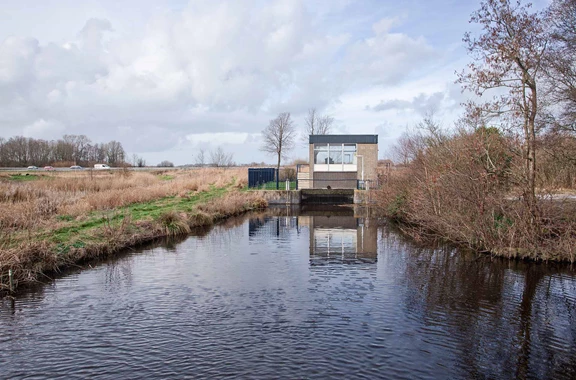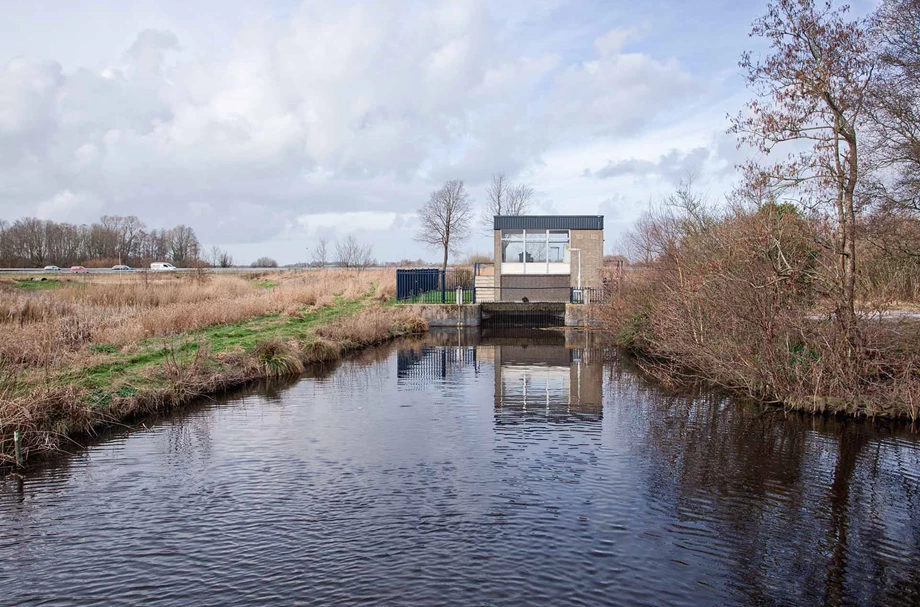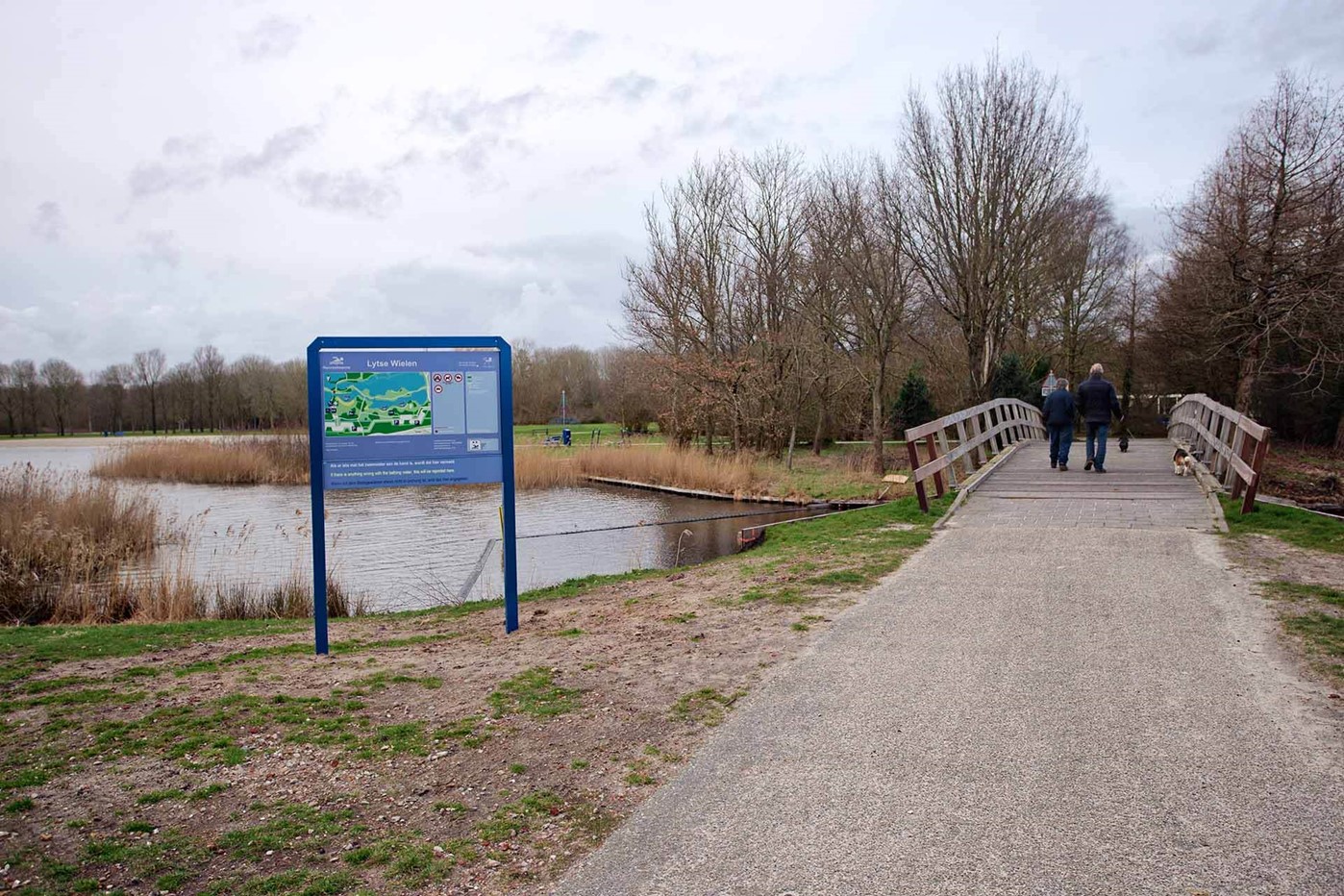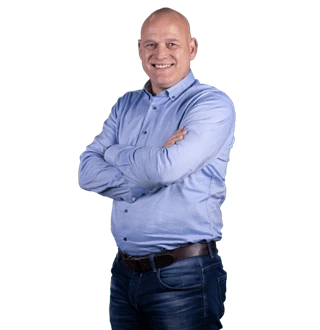


Friesland is a Dutch province rich in water. To ensure that all the water is and remains clean, Regional Water Authority Friesland measures the water quality at more than 200 sites. This includes swimming and nature site De Kleine Wielen in Leeuwarden. At this site, Regional Water Authority Friesland measures blue-green algae using equipment from Royal Eijkelkamp to protect swimmers as well as improve water inlet management.
Jan Roelsma is the Water Quality Coordinator at Regional Water Authority Friesland and explains how they achieved better control of blue-green algae by means of continuous measurements. ‘The Regional Water Authority Friesland measures the water quality at more than 200 sites. The measurements include, for instance, physical-chemical parameters, nutrients, oxygen content, and water temperature. These are the standard parameters. We do this once every four weeks and have been doing so for the last 15 years. It’s become a tradition. We take a water sample and send it to the lab, which then analyses the water quality parameters. We will continue to use this conventional method, simply because there are no sensors or other no measurement methods for all the parameters we measure.’
Without Royal Eijkelkamp’s measuring equipment, we would have had to accept the presence of blue green-algae in the bathing water.


‘However, based on an innovation programme at Regional Water Authority Friesland, we investigated whether there are other ways to measure water quality, especially in ways that involve continuous measurement. This yields immediate results, given that the traditional “misses” a period of 4 weeks – and a lot can happen in 4 weeks. The weather can change, which in turn can have an effect on water quality.’
‘Royal Eijkelkamp had the equipment to perform continuous measurements, and we used it in a pilot project at De Kleine Wielen in Leeuwarden. The immediate reason to do so was to improve intake management for this swimming and nature site. This is important, since water is let in as soon as there is blue-green algae. Thanks to the Multi-parameter Set, we were able to let in water in a much more targeted manner and limit it to the moments that this was really necessary, so as to control the blue-green algae. Our system received the data immediately, enabling us to monitor in real time online and quickly respond by letting in water remotely once the blue-green algae exceeded a certain limit value. This ensured a very short response time.'
‘Last year was also a special year to work with this given the high temperatures and the fact that water shortages meant there was much less water for us to let in. However, in the end we were able to control the blue-green algae with the small amount of water that was available. We hardly had any blue-green algae problems.'
‘If we hadn’t had Royal Eijkelkamp’s measuring equipment, we definitely would not have been able to let in water as efficiently as we could, because of the water shortage caused by the persistent drought. In such a situation, you can only accept the presence of blue-green algae and issue a no-swimming warning. After all, you wouldn’t want swimmers to get sick because of the blue-green algae in the water. If this happens, De Kleine Wielen must be closed for a couple of days or weeks – at the busiest time of the summer season. Even worse, Leeuwarden was the European Capital of Culture at the time. That would have been an extremely unfortunate combination.'
‘Thanks to the success of the pilot project, we will be using the equipment again this year. In fact, we have purchased a second Multiparameter Set for a site in the south-western corner of Friesland. There are many bathing water sites here where we have had issues with blue-green algae for a number of years now. We will install the equipment there to monitor how the blue-green algae population fluctuates throughout the year. This will allow us to gain even more experience, collect even more data, and eventually take even more targeted measures to control blue-green algae. This way, we will ultimately increase the safety and security for swimmers.’
The redevelopment of De Kleine Wielen in Leeuwarden is a good example of cooperation between the municipality, regional water authority, province, and users of the swimming and nature site. De Kleine Wielen also received extra attention because it is an important link in the Wet Corridor of the Ecological Main Structure (EMS). This EMS provides connections between nature conservation areas, giving plants and animals with a larger habitat.
This is also one of the objectives of the European Water Framework Directive (WFD). This WFD is aimed at preserving or improving water quality through measures in all European countries. This is of great importance for De Kleine Wielen, as water in Friesland crosses half of Europe via the Rhine before it arrives here.

Need help for your soil or water related project? Our specialist Erik is happy to help.